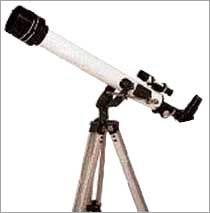DK Space: Astronomy
Astronomy is the science that studies the stars and all the other bodies (objects) in space. The TELESCOPE is an astronomer’s most useful tool—it makes faint and far-distant objects visible.
Records from the earliest civilizations show that people studied the Sun, Moon, and stars more than 5,000 years ago. The priests of Babylon and Ancient Egypt recorded the movements of the Moon and the stars and used them to create a calendar for farming and religious events—but people probably studied the sky long before that.
Modern astronomers are trying to answer big questions about the Universe. By studying stars at different stages of life, they figure out how stars are born, live, and die. By studying galaxies, they are finding out how and when the Universe began and how it might end. They also explore the planets and other bodies in the Solar System.
An astronomical telescope uses lenses or mirrors to gather and focus the light from distant objects. This makes it easier to study them in detail. The first person to observe the heavens using a telescope was the Italian scientist Galileo Galilei in 1609.
Galileo’s telescope used glass lenses to gather and bend light to a focus. This kind of telescope is called a refractor, because the lenses refract (bend) light. A telescope that uses mirrors is called a reflector—the mirrors reflect light to bring it to a focus. Some telescopes are launched into space for a clearer view. Space telescopes gather light and invisible rays, such as gamma rays, ultraviolet, infrared, and X-rays.
Light comes into the front of the telescope. A large objective lens focuses the light to a point near the bottom. You look through an eyepiece lens, which magnifies the image and focuses it onto your eye. You can move the eyepiece in and out to bring the image into sharp focus.

